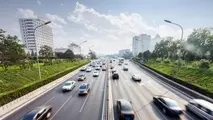Inrix identifies worst traffic hotspots in the USA’s 25 most congested cities

One of the leaders in connected car services and transportation analytics, Inrix, has published research on the worst traffic hotspots in the USA, ranking them by ‘impact factor’, and estimating their economic costs.
Using its Roadway Analytics system, a cloud-based traffic analysis tool, Inrix identified and ranked 108,000 traffic hotspots in the 25 most congested cities in the USA identified by the company’s Global Traffic Scorecard. The ranking was determined by an ‘Impact Factor’, which is based on the duration, length and frequency of traffic jams. The Impact Factor score enabled Inrix Research to estimate the economic costs in terms of wasted time, lost fuel and carbon emissions over the next decade, and provided a metric to analyze the health of the transportation network within each city or metropolitan area.
Inrix provided an in-depth look at the 25 most-congested cities, analyzing the hotspots from March through April, 2017. The study revealed:
• New York had more traffic hotspots than any other city (13,608), costing drivers US$64bn by 2026 due to wasted time, fuel and emissions;
• Los Angeles, which tops the overall Impact Factor ranking, due to the severity as well as the high number of hotspots (10,385), has 10 of the 25 worst traffic hotspots, costing drivers an estimated US$91bn over the next 10 years;
• The I-95 in the Washington DC region was the worst overall traffic hotspot, which caused 1,384 traffic jams over the study period, stretching 6.47 miles (10.4km) and lasting 33 minutes on average;
• Initiatives, such as the Illinois Tollway congestion relief project on I-90, are proving successful at increasing speeds.
Inrix Roadway Analytics is a cloud-based, on-demand traffic analysis tool available in 47 countries across North America, Europe and the Middle East. It provides transportation agencies with easy access to powerful road analysis and insights stemming from the company’s highly-granular XD segments. The tool allows transportation planners and government agencies to use big data to monitor changes in traffic patterns, target improvements to maximize benefits, and produce visualizations to convey important information to decision makers. With historical data and multi-year trend analysis, in the USA, Roadway Analytics is being used to assist with setting and tracking progress against new federally-required mobility performance targets.
“Many cities are calling for increased transportation infrastructure spending to fix ailing roads, bridges and transit networks,” said Bob Pishue, senior economist at Inrix. “By identifying traffic hotspots and analyzing their root causes, cities can effectively combat congestion and maximize present and future investments.”



